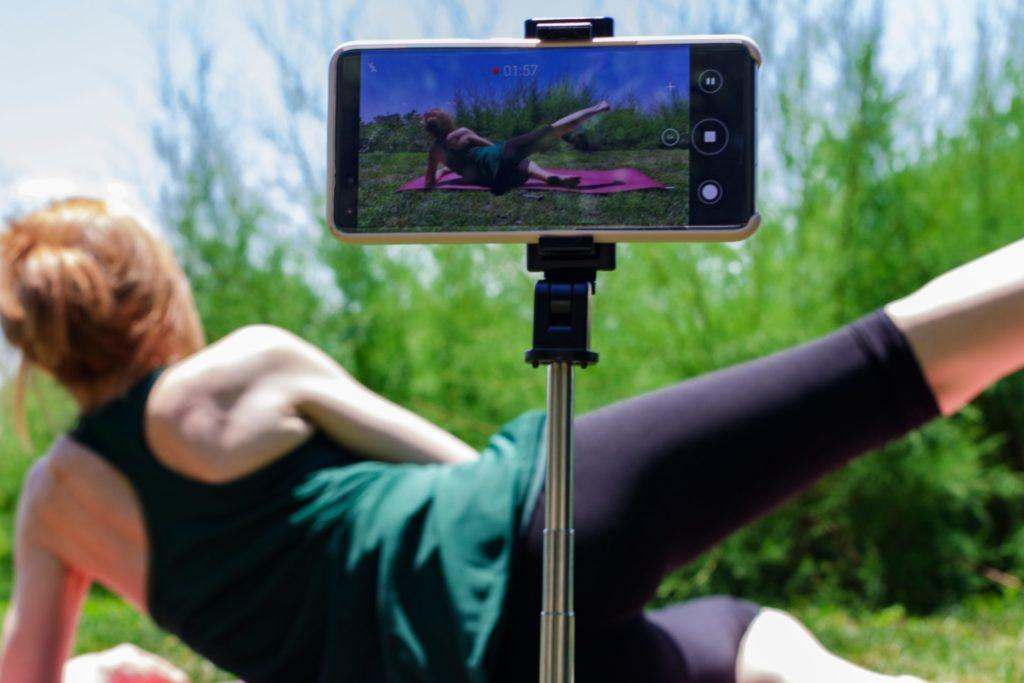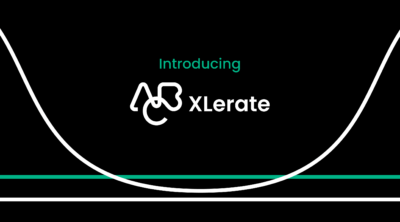Video content has become a core part of today’s world: Whether you’re the marketer or brand creating it or the end-user watching it.
TikTok, YouTube, Instagram Reels, Vimeo – whether it’s short or long-form video content, they’re here to stay. Social media did to videos what Gutenberg did to the printing industry. With high-speed internet, powerful cameras, and changing consumer preferences, it became easier to publish videos.
A Vox article predicted in 2017 that 82% of the internet traffic would be driven by video in the next five years. And the current numbers suggest that we are very close to this mark.
So if video isn’t already a part of your content marketing strategy, it’s time to buckle down.
In this article, we’ll outline why a video content strategy is a must-have for your business. We’ll also dig into some popular types of video content and some tips for building a video marketing strategy. Skip ahead to:
- What does a video content strategy look like?
- 5 popular types of brand marketing videos
- 6 tips for building the perfect video marketing strategy
What does a video content strategy look like?
Robert Weiss famously said that ‘business decision-makers love online video because it gives them the most amount of information in the shortest amount of time.’ If these words are anything to go by, you need to incorporate videos in your marketing plan right away.
While it’s clear that videos are an effective marketing tool, they come with their own set of challenges.
Creating a high-quality brand video isn’t child’s play. It requires multiple skills like scriptwriting, camerawork, editing, marketing, and more. Think of yourself as a film producer. Besides commissioning the film and overseeing its production, you’re also responsible for ensuring that it reaches the target audience and appeals to them. Hence, you need a video content strategy.
Before understanding how to build a strategy, let’s quickly find out the most popular forms of video content.
5 popular types of brand marketing videos
Over time, different types of videos have emerged, and each one has its own objective. You need to incorporate the ones that will help you achieve your business goals. After all, you don’t need explainer videos if you’re a clothing or footwear brand!
We have listed some popular types of videos in the context of branding and marketing below.
1. Commercials
Remember those good old Wendy’s, McDonald’s, or Coca-Cola TV advertisements? Or those annoying YouTube channel ads that interrupt your interesting video? That’s how a commercial looks like.
Commercials appeal to a wide audience base and provide information in a snappy and engaging way. Typically video advertising like this will last between 30 seconds to 2 minutes. Most importantly, they have a hook that makes them impressive and memorable for the audience.
2. Social media content
These are short clips curated specifically for a video platform like Instagram or Facebook. You could do montage sequences, influencer interview bites, or tease new products. Make the best use of features like autoplay, video loops, and call to action buttons to improve the conversion rates.
When you’re creating videos, it’s essential to consider the technical specs of the social media platform you’re posting on. Of course, every app has an ideal video format; you’ll also want to keep in mind that most users will be viewing your video on mobile devices. For example, LinkedIn videos can have up to 60 frames per second and an aspect ratio between 1:2.4 to 2.4:1. Generally, you can share similar sizes on Linkedin and Twitter. But Instagram will have different specs depending on whether you’re sharing a grid post or using Instagram stories.
3. Explainer videos
Nearly 96% of the people who participated in a Wyzowl survey stated that they watched an explainer to find out how a product works. As a result, even companies that don’t rely on videos for branding have started to make explainers.
Such videos can be considered as a subset of social media videos or commercials. They can be posted anywhere but should exclusively focus on how a product or a service works. Marketers love them because explainer videos improve conversions, help in search engine optimization (SEO), and can be repurposed easily.
4. Product videos
These are videos wherein the product becomes the protagonist to improve credibility. They can work well on a landing page and e-commerce platforms where trust-building is an important exercise. More often than not, the target for such videos comprises people who are trying to research more about the product.
In less than a minute, your video should be able to highlight the product’s USP. If your video is aesthetically pleasing, it’s more likely to evoke a positive response from the viewers.
5. Testimonials
There’s nothing better than bringing in a happy customer to talk about their experience. At least 90% of the respondents in a survey claimed that they rely on online testimonials before making a purchase. In this era of social proof, a customer testimonial video could be a game-changing marketing strategy for your business.
The Top 10 Barriers
Slowing Your Fitness
Business Growth
Discover more Owing to shorter attention spans, it’s best if your video is less than a minute or two at the most.
6 tips for building the perfect video marketing strategy
Here are some suggestions for nailing that video marketing strategy.
1. Set objectives for the exercise
Marketing 101 teaches us that the three stages of a buyer’s journey are brand awareness, consideration, and decision. The same applies to your video marketing efforts. Find out the position of your target customer in the user journey and cater to them accordingly.
It’s essential to set clear KPIs for your video. If a new customer is in the awareness stage, you might want to look at the view count. If they are in the consideration stage, you might want to look at the click-through rate. If they are in the decision stage, you might want to look at the number of sales closures.
Don’t just stop with setting KPIs. Ensure that there’s a robust mechanism to track and optimize the metrics and drive brand awareness.
2. Identify your audience
In the previous step, we were only able to understand where the potential customer was in the user journey. Now, it’s time to find out who’s the customer. Is it a twenty-something college-goer? Is it the CEO of a billion-dollar company? Or both?
While you can take the one-size-fits-all approach, it wouldn’t be as effective. It’s important to get into your customer’s shoes and find out their preferences to create a visual impact.
Conduct a demographic analysis of your sales records to get an idea. Many a time, companies create buyer personas to identify their potential customers. Use such personas to get a clear picture of how to target them. Else, you’ll end up using TikTok to distribute a video intended for middle-aged individuals!
3. Create a great script
Unless you’re a Michael Curtiz (the director of Casablanca), you can’t start shooting without a script! In your pre-production or storyboarding phase, you need to focus on coming up with an impactful script. And any script which aims to grab eyeballs needs to incorporate three important elements:
- It has to explain the customer’s pain point
- It needs a protagonist to convey the message in your brand’s style
- It should offer a solution to the audience
Once these are in place, you can use elements like production design, location, dialogues to invoke specific emotions from the audience. For instance, if your protagonist is a cartoon character selling a cotton candy maker while standing in Disneyland, it’ll surely put a smile on the viewers’ faces.
4. Incorporate brand requirements
Yes, shooting a brand video is indeed a creative process. But, we often forget that it has certain business implications. Some general rules while making marketing videos are: use the logo animation as it is, avoid mentioning competitors, and follow the brand’s color schema.
Remember, your video represents your brand – this should be at the forefront of your mind throughout the video production.
5. Work within the stipulated timelines
Even the most experienced professionals create a meticulous production schedule. This is because there are many moving parts when it comes to video productions, and it’s very easy to lose track of time.
Split your schedule into different phases and have completion deadlines for each phase. If you have different teams working on the project, create a project pipeline to ensure maximum efficiency.
Keep all the team members and other stakeholders updated regarding the status of the project. Lastly, always have a buffer period to account for all unwarranted delays or emergencies.
6. Plan according to the budget
You have a grand vision for the video ad, but do you have a budget of the same size? The size of your pocket will determine the scale of the project. Discuss money matters with your team before the project commences.
Some helpful tips if you’re on a shoestring budget:
- Eliminate all the unnecessary expenses
- Get in-house assistance for production assistance, voiceovers, and casting
- Negotiate with vendors to get the best possible deals on props and equipment
- Hire a professional to manage all production and budget-related aspects
In Summary
Creating videos and sticking to the strategy can be a bit tedious in the beginning. Nevertheless, try to make a habit of working with a plan, at least in a piecemeal manner. This kind of discipline is valuable in the video marketing business. It will help you keep your eyes on the prize and give you a sense of direction whenever you’re lost.
Here’s a round-up of everything we covered in this article.
- Videos are the present and future of digital marketing
- A video strategy is important for achieving your marketing goals
- The most popular types of brand videos are – commercials, social media content, explainers, product videos, and testimonials
- You need clear objectives before starting your video marketing campaign
- Find out who’s your target audience
- Write a great script that captures the ethos of your brand
- Ensure that your video speaks in the brand voice
- Work within the budget and time boundaries approved by all the stakeholders
Want to create the perfect content strategy for your brand? Here’s an episode of The Fitness Founders Podcast wherein Jack Cardy, the co-founder of Media Bros, spills the beans. He talks about content strategy, creating budget videos, cutting through the social media clutter, and more.















